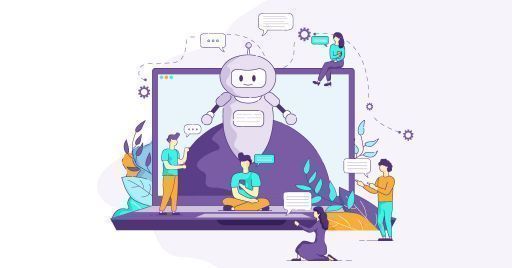
The use of generative artificial intelligence in eLearning

Let's discover the best practices and key strategies for successfully implementing generative artificial intelligence in online training.
In recent years, artificial intelligence (AI) has revolutionized many industries and sectors, including education. In particular, in the field of eLearning, generative AI has opened up new possibilities and opportunities. But what exactly does "generative artificial intelligence" mean and how can it be used effectively in the context of eLearning?
What is generative artificial intelligence?
Generative artificial intelligence is a subcategory of AI that deals with the creation of content, images, text and more, through the use of machine learning algorithms. Unlike traditional AI, which relies on existing data to make predictions or take actions, generative AI is able to generate new data that did not exist before.
How can it be used in eLearning?
1. Personalization of learning
One of the main applications of generative AI in eLearning is the personalization of the learning experience. Through the analysis of student data, AI can create personalized learning paths, adapted to the needs and learning pace of each individual. This means students can receive content tailored to them, making learning more effective and engaging.
2. Generation of educational content
Generative AI can be used to create educational materials such as quizzes, exercises and even lesson texts. This not only allows teachers to save time in preparing materials, but can also ensure greater variety and freshness in content, making learning more stimulating for students.
3. Virtual tutor
Another interesting application is that of the virtual tutor. Using generative AI, you can create virtual tutors that can answer student questions, provide additional explanations, and even simulate one-on-one tutoring sessions. This can be especially helpful for students who need additional support outside of the classroom.
4. Automatic translation
Thanks to generative AI, machine translation has become increasingly effective. This is extremely useful in an online learning environment, where students may come from different parts of the world and have different language needs. With machine translation, you can make your learning materials accessible to a global audience without having to manually translate them.
5. Generating and summarizing the text
Generative AI can read extensive documents to convert complex data into concise summaries without compromising quality. It can enable L&D professionals to condense lengthy training materials and generate summary text to help students quickly consume large, complex amounts of information.
Tips for using generative artificial intelligence in training
As we have seen, the applications of generative AI in the eLearning field are multiple and constantly evolving. However, it is important to note that artificial intelligence will never completely replace the role of teachers and instructional designers; rather, it will complement them by providing tools and resources to enhance the student learning experience. With careful planning and responsible use, generative AI can become a valuable ally in education. Let's see how.
1. Maintain the balance between automation and human interaction
It is important to find a balance between the automation offered by generative AI and human interaction. While AI can perform many functions automatically, it is crucial to maintain a human component in eLearning, especially to provide personalized support and motivation to students.
2. Constantly evaluate effectiveness
Constantly monitoring and evaluating the effectiveness of generative AI-based solutions is essential to continuously improve the student learning experience. Use learning metrics and student feedback to adjust and optimize the use of AI.
3. Ensure the quality of the content generated
While generative AI can produce a wide range of content, it is critical to ensure that content is accurate, up-to-date and of high quality. Teachers and industry experts should collaborate with AI developers to define quality standards and control the generated results.
4. Promote transparency and ethics
Finally, it is important to promote transparency and ethics in the use of generative AI in eLearning. Students should be aware of the use of algorithms to personalize their learning and the privacy and security of their data should be guaranteed.
Did you like this article? Sign up for the newsletter and receive weekly news!
Subscribe to NewsletterComments:
No comments are in yet. You be the first to comment on this article!